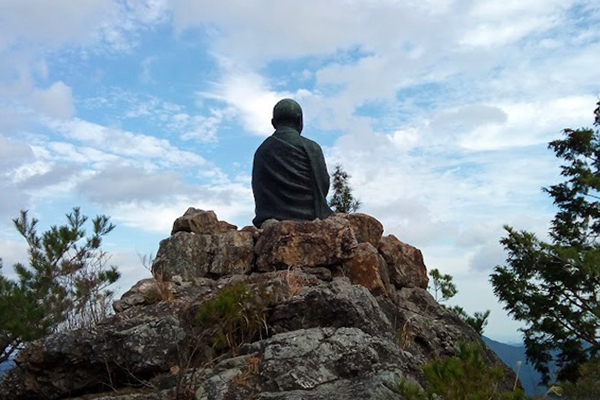The Shikoku Pilgrimage Temple Guide
Basic knowledge of the pilgrimage 1

Origin of the Shikoku Pilgrimage
Since ancient times, Shikoku has been a place far from the center of the country and a place for religious practices. Kōbo Daishi (Kūkai), who was born in Sanuki (Kagawa) often engaged in Buddhist spiritual training here as well.
The Shikoku Pilgrimage is a pilgrimage to visit 88 temples associated with Kōbo Daishi . At first, the pilgrims were mainly monks who were engaged in spiritual training. After that, many people from all over Japan went on the pilgrimage along with the rise of faith in Kōbo Daishi . As a place related to Kōbo Daishi , it developed into a sacred place that everyone wants to visit at least once in their life.
Kōbo Daishi
Kōbo Daishi (Kūkai) was born in 774 in Byōbugaura, Sanuki (now Zentsūji City, Kagawa). As a child, he was very smart. His childhood name was Mao.
Around the age of 15, he went up to Nagaokakyō, and he entered the university at the age of 18, planning to become a high-rank official. Around that time, he met Buddhist monks in Yoshino and Mt. Katsuragi and was greatly influenced by them. Therefore, overcoming the opposition of people around him, he quit the university and underwent rigorous training such as performing the Kokūzō Gumonjihō at Mt. Ishizuchi, Mt. Tairyūnotake, and Cape Muroto, all on Shikoku, where he was born. He wrote about these days of training in his book Sankyō Shiki.
After that, he changed his name to Kūkai and traveled to Tang China as part of a group of Japanese envoys. There he learned all about esoteric Buddhism from Oshō Keika at Seiryuji in Chang'an (Xian). After returning to Japan, he was granted permission to establish Shingon Buddhism and was granted Kōyasan and Tōji. He wrote Sokushin Jōbutsugi and Himitsu Mandara Jūjushinron. He was committed to spreading Buddhism, especially esoteric Buddhism. In addition, he also contributed to the dissemination of education and helped with social projects such as the construction of Japan's first educational institution for the general public, Shugei Shuchiin, and the restoration of Mannōike Pond.
He devoted his life to the nation and the people. He wished people to be happy and prosperous, and encouraged everyone to strive to make full use of their abilities and talents. In 835 he passed away at Kōyasan at the age of 62. In recognition of his achievements, he was awarded the title of Kōbo Daishi by Emperor Daigo in 921.
Dōgyo Ninin
Dogyō means a companion who walks with you. Ninin means two people. In other words, when you are on the pilgrimage, you are always with Kōbo Daishi . It is a symbolic way of thinking about the Shikoku Pilgrimage that supports the heart of the pilgrim.
